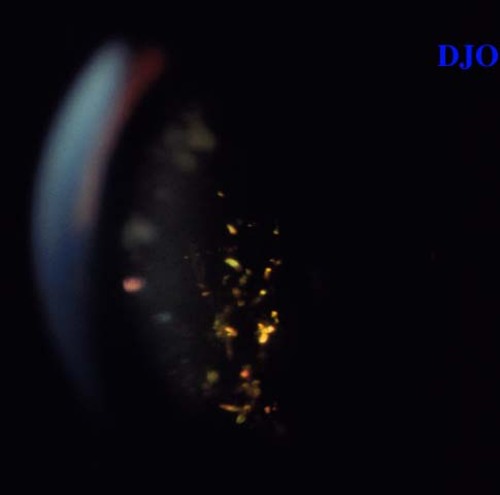General Ophthalmology Quiz 10

Figure 1
This is a high magnification view of a cataract in a middle aged woman. (Photograph courtesy of Teresa C. Chen, MD)
This is a high magnification view of a cataract in a middle aged woman. (Photograph courtesy of Teresa C. Chen, MD)
Answer: Christmas tree cataract.
2. What systemic medical condition is classically associated with these lens findings?
Answer: myotonic dystrophy
3. What other ocular findings may this patient have?
Answer: Ptosis, orbicularis weakness, progressive external ophthalmoplegia, and pigmentary retinopathy similar to that of Kearn's Sayre syndrome. Aside FROM Christmas tree cataracts which contain multicolored iridescent crystals, patients with myotonic dystrophy may also have spokelike cortical opacities along the suture line.
4. What general physical examination findings may this patient have?
Answer: Myotonia is the often the first detectable physical exam finding. This may be strikingly demonstrated by shaking hands with the patient. The patient may not be able to release his or her grip. Patients with myotonic dystrophy may also have weakness of the limb muscles, particularly the leg extensors. Atrophy of limb muscles may also be apparent on inspection. Men in this condition often have early onset of frontal baldness.
5. What is the inheritance pattern of this systemic medical condition?
Answer: autosomal dominant